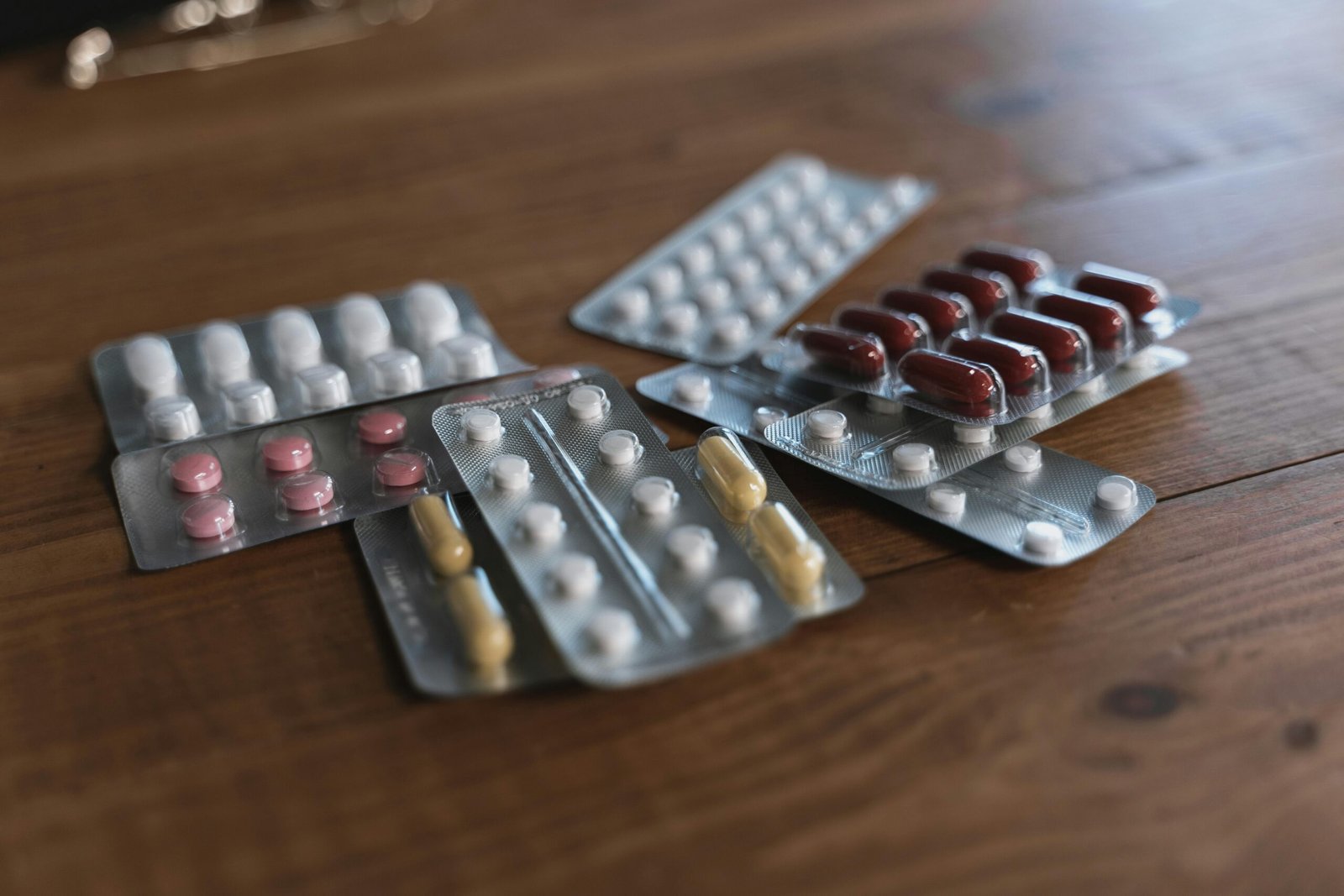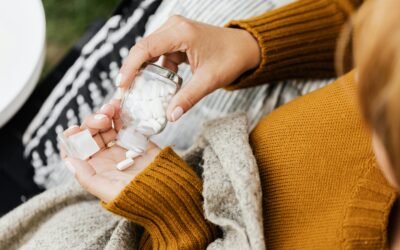Completed a round of antibiotics only to find that your acne has come straight back afterwards? Antibiotics are usually the first treatment people try when it comes to clearing acne. But, for some of us, the acne can come straight back after antibiotics. In fact, most of my clients have done at least one round of antibiotics. Some have even been on them for years without seeing long-term improvements with their acne.
I know it’s so frustrating. You thought you were finally on the road to clear skin, only for everything to take a turn for the worse as soon as you finished your treatment. So, what’s going on? Why does this happen?
Usually, recurring acne after antibiotics is a sign that there are underlying imbalances that haven’t been addressed. So here are some reasons why your acne has come back after antibiotics, and what you can do about it.
How Do Antibiotics Help Acne?
To understand why acne might return after stopping antibiotics, we first need to know how these medications actually work in the first place.
The primary role of antibiotics in acne treatment is to reduce inflammation and kill acne-causing bacteria. Acne, especially the more inflamed, cystic kind, is often linked to an overgrowth of Propionibacterium acnes (now called Cutibacterium acnes). This bacteria naturally exists on healthy skin. But when imbalances occur and oil production increases, the bacteria can feed on the oil, multiply and grow within the pore, which triggers inflammation. This leads to those painful breakouts we all know too well.
So, antibiotics work by targeting this bacteria and therefore decreasing inflammation. By doing this, they can help lessen the severity of acne. But they don’t directly address the root causes of breakouts.
What Are the Main Antibiotics Used for Acne?
There are a few different antibiotics commonly prescribed for acne treatment. These include:
- Oral antibiotics: These are taken by mouth
- Topical antibiotics: These are applied directly to the skin. They’re often combined with other acne-reducing ingredients like benzoyl peroxide.
If you’ve used antibiotics for acne, you might currently be on one of these or have tried them in the past. Some people even rotate through different antibiotics if one stops being effective or doesn’t fully clear their skin.
Typically, antibiotics for acne are prescribed for short-term use. This can range from a few weeks to several months. It will depend on the severity of your acne and how well your skin is responding. Most doctors aim to keep you on antibiotics for as short a time as possible. Being on them for as short as possible can help avoid side effects and antibiotic resistance. However, I’ve had clients who have been on antibiotics for years, and this can come with some negative effects, which we’ll explore next.
Why Does Acne Return After Stopping Antibiotics?
I just want to point out, I’m not against medication. In fact, I often work alongside medical treatments for acne to help you get the best results on your treatment plan. But antibiotics are a double-edged sword. Yes, they kill the bad bacteria causing acne, but they can also reduce some of the good bacteria in your gut and on your skin. This can have a knock-on effect on your whole body, not just your skin. Unfortunately, antibiotics often act as a temporary solution rather than a cure.
These are some of the main reasons your acne may be returning after stopping antibiotics:
1. Underlying Hormonal Imbalances
One of the biggest reasons acne returns post-antibiotics is that you actually had hormonally driven acne, and antibiotics do nothing to regulate your hormones. If your acne is hormonally driven (which is extremely common), antibiotics might suppress inflammation temporarily but fail to address the root cause (your hormones).
Hormonal acne is often linked to imbalances in androgens (such as testosterone and DHT), insulin resistance, or conditions like polycystic ovary syndrome (PCOS). If these issues aren’t addressed, acne can come back once antibiotics are stopped.
2. Microbiome Disruption
Now although the antibiotics perscribed for acne are more focused on reducing inflammation, long-term use of any antibiotic isn’t really great for gut health. As mentioned earlier, antibiotics don’t just kill acne-causing bacteria, they can also reduce good bacteria in both your gut and on your skin. When your gut microbiome is thrown off by antibiotics, it can lead to digestive issues, a damaged gut lining, an increased risk of yeast infections, and a decrease in good bacteria. All of these things can then trigger or worsen a skin condition. Why? Because the bacteria we have in our guts affect our immune system, inflammation, hormones, mood, nutrient absorption, and so much more.
This can also happen on your skin. And for a long time we’ve always focused on killing acne-causing bacteria if you struggle with acne. But did you know that people with healthy skin also have this bacteria on their skin? How can that be? Well, similar to the gut microbiome, the skin microbiome needs to be balanced. We should have a healthy level on beneficial bacteria on the skin to help keep any bad or ‘acne-causing’ bacteria in check. The good bacteria on the skin help to keep the pH of the skin correct, which naturally helps to keep the balance of good vs bad bacteria in check. They also help to regulate inflammation, support wound healing and maintain a healthy skin barrier. So sometimes, yes, we need antibiotics to reduce an infection. But alongside this we also need to protect the good guys. And again similar to how we correct the gut microbiome, we can correct the skin microbiome with the correct skincare, and even topical probiotics.
3. Blood Sugar and Insulin Imbalances
A common driver of acne is issues with blood glucose levels and insulin. Imbalances in blood glucose can increase hormones, which can increase oil production, blocked pores and inflammation in the skin. You might have guessed by now, but antibiotics also don’t target this underlying cause of acne. Again, we’re going back to the gut here, but your gut microbiome actually plays a role in metabolism and glucose regulation.
4. Antibiotic Resistance
Overuse or long-term use of antibiotics can eventually lead to antibiotic resistance, which makes the bacteria that cause acne more resistant to the medication. This can lead to antibiotics becoming less effective over time, which means your acne might not stay controlled even while on them.
Supporting Your Gut While on Antibiotics
If you’re currently on antibiotics or considering them, don’t panic! Please don’t stop your prescription just because you’ve read this blog. I’d encourage you to always follow the advice of your medical professional. But if you’re questioning whether the treatment plan is correct for you, you can bring it up with your doctor or dermatologist. Know that there are options to work alongside a nutritionist (like me) to help work on underlying imbalances while on antibiotics, and protect your gut as much as possible. But there are a few steps you can take to support your gut and keep things balanced:
Try a Probiotic:
One of the most common recommendations when you’re on antibiotics is to take a probiotic. Probiotics help replenish the good bacteria in your gut that antibiotics can deplete. You’ll want to leave some space between your antibiotic and probiotic though, to make sure the probiotic survives. I’d recommend 4 hours between your antibiotic and the probiotic. Strains that have the research to back up their use alongside antibiotics are Saccharomyces boulardii, Lactobacillus rhamnosus GG and the LAB4 blend of bacteria.
Eat bacteria-boosting foods:
Eating well is important while on antibiotics. You want to help feed beneficial bacteria, so incorporate prebiotic foods (which act like fertiliser for good bacteria). All fibre from fruits and vegetables are great, but some foods that are very high in prebiotics includes garlic, onions, leeks, bananas, and asparagus, can help support the good bacteria in your gut. Fermented foods like kefir, sauerkraut, and kimchi are also great for feeding your microbiome as they contain live bacteria.
Support your gut lining:
Supplements like L-glutamine can help support the healing and repair of your gut lining. I also like to include things like cabbage and bone broth which can help repair the gut further. However, if you’re thinking of taking supplements please check with a medical professional or nutritional therapist before doing so. Supplements can interact with medications, which can have some serious side effects.
What Can You Do If Your Acne Comes Back After Antibiotics?
If you’ve noticed that your acne is returning after finishing antibiotics, it could be a sign that there’s something deeper going on with your skin. Antibiotics alone won’t always address the root cause of acne, so it’s worth considering a deeper dive into your health. This could involve:
- Hormonal testing to check for imbalances (such as high androgens)
- Gut health testing to see if there are any imbalances or dysbiosis contributing to inflammation
- Supplements to correct any imbalances or deficiencies affecting the skin
- A personalised skincare routine to target your unique skin needs
The above functional tests are something we can do in 1:1 sessions.
Acne is a complex condition and often has a few different underlying drivers. If your breakouts have returned after stopping antibiotics, it’s likely due to unresolved root causes like hormonal imbalances, gut dysbiosis, blood sugar issues, nutrient deficiencies and more.
But there is good news! Clear skin is possible when you take a holistic approach (which can be done alongside antibiotics). This doesn’t mean everything needs to be natural. It means investigating all areas of your health and using a combination of treatments to support you as a whole. If you’re ready to dig deeper and create a long-term plan for healthy skin, feel free to get in touch and we can see what could help you.





0 Comments